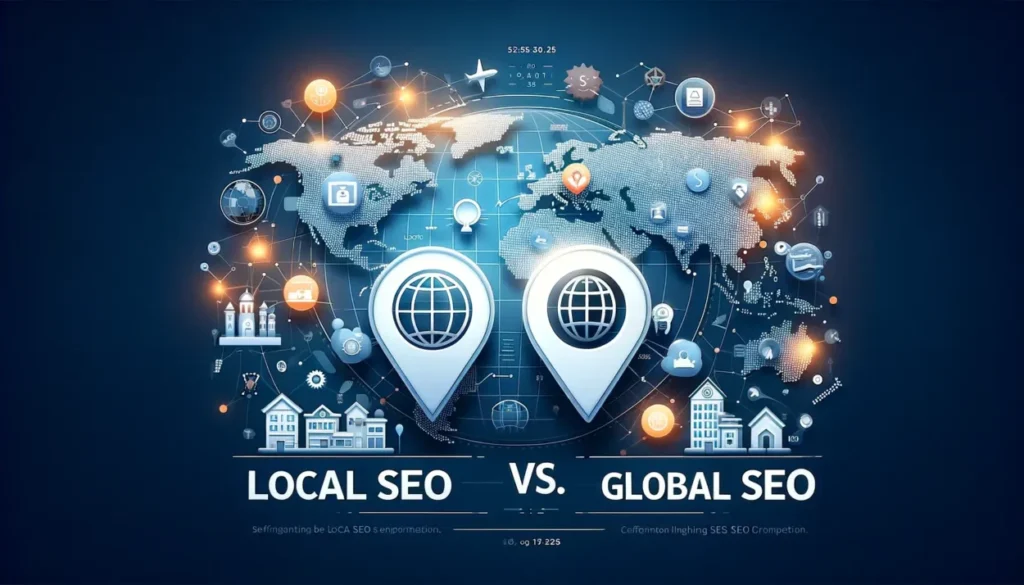In the ever-evolving realm of social media, where TikTok dances become the day’s anthem and Snapchat caters to fleeting moments, the art of influencer marketing takes center stage. It’s a digital dance of engagement, where the first content-based search protocol meets the glittering world of virtual communities, and domain name systems work tirelessly in the backdrop. As the arpanet network once connected a few arpanet computers, now billions of users are interlaced through an intricate web of social interactions, transforming the way brands reach the general public.
Journeying through the timeline of internet innovations, from the first commercial transaction to the advent of streaming video, the influence of marketing experts has grown in parallel with social media’s reach. In this landscape, where the first emoticon once punctuated online conversations, we now find influencers crafting narratives that resonate deeply with their audiences. The cost of this next-level approach to marketing is a mosaic of factors, from the influencer’s follower count to the complexity of the campaign, each pixel contributing to the larger picture of modern-day advertising.
What Factors That Impact Influencer Rates?
Navigating the world of influencer costs can feel like a puzzle with many moving pieces. The rarity of finding an influencer who offers a one-size-fits-all flat rate adds to the challenge. Trust plays a pivotal role, as influencers thoughtfully set their prices based on the value businesses are willing to invest in their expertise and reach. Although our guide doesn’t capture every nuance that influences an influencer’s fees,
it provides key insights into the complex tapestry of factors they consider when pricing their services. Understanding this landscape is critical for companies aiming to forge successful partnerships with influencers.The following are the ones that are most likely to affect the price:
- The influencers’ audience size and level of involvement
- They take advantage of a particular channel.
- What number of postings do you want, and whether or not they should contain things like photographs, videos, and music are up to you.
- What level of work will be required on the part of the influencer
- When and where the advertisement will be promoted/cross-posted
- Fees charged by the agency (if the influencer is with an influencer marketing agency)
Let’s take a deeper look at these and other characteristics so that you can have a better understanding of what you’re getting for your money.
Influencer Type and Their Impact on Cost
In the dazzling arena of influencer marketing, mega influencers radiate a prestigious allure, commanding vast audiences with their every post. These titans, along with their macro influencer compatriots, are the high-end luxury vehicles of brand promotion, offering extensive reach but at a premium. Transitioning to the realm of micro influencers, the landscape shifts to a more approachable neighborhood where value meets affordability. Here, the influential voices resonate with authenticity, nurturing intimate communities that brands can tap into without breaking the bank.
Mega and Macro Influencers: The High-End of Influencer Marketing
Emerging from the bustling digital marketplace, one finds themselves amidst the dazzling realm of high-impact promotion, where mega influencers reign supreme. With follower counts soaring into the millions, these digital titans command the screens and hearts of a vast audience, their endorsements akin to Midas’ touch for brands yearning for visibility. Each post, a tapestry of vibrant imagery and compelling narratives, transforms products into coveted treasures, beckoning consumers with the subtle siren call of lifestyle aspirations.
Harnessing the clout of mega influencers is akin to securing a spot on a grand billboard overlooking the busiest intersection of the virtual and real worlds. While their endorsement deals often carry a hefty price tag, the return on investment can be monumental, as their vast following translates into potential exponential reach.
In the constellation of influencer marketing, celebrity influencers also shine brightly. Their established fame beyond the internet offers a unique blend of traditional and digital appeal, creating a synergistic effect that can justify the premium cost for certain high-stakes campaigns.

The Value and Affordability of Micro Influencers
As the digital landscape continues to burgeon with varied tiers of online personalities, a pivot towards the value and affordability of micro influencers reveals a cost-effective strategy within the influencer marketing sphere. Unlike their mega influencers counterparts, who command eye-watering fees for endorsements, micro influencers offer a more intimate level of engagement, painting a canvas of authenticity that resonates deeply with niche audiences.
These digital artisans curate content with a personal touch that often eludes the grandeur of high-profile influencer campaigns. Brands eager to tap into specific markets find a treasure trove of opportunity with these individuals. They wield the power to sway purchase decisions, yet their services come without the hefty price tag usually associated with vast reach.
With each carefully crafted post, micro influencers weave a narrative that aligns seamlessly with the brand’s message, all the while keeping the financial ledger in check. It’s this blend of genuine interaction and economic prudence that makes micro influencers a beacon for businesses seeking to maximize impact without depleting their marketing coffers.
When Celebrity Influencers Make Financial Sense
Venturing beyond the realm of less costly promotional strategies, one arrives at the juncture where the allure of stardom intertwines with brand narratives, making a compelling case for the investment in luminaries of the entertainment and sporting world. When the strategic alignment is akin to the stars in perfect constellation, the financial plunge into partnering with household names can yield a wellspring of benefits.
Harnessing the vast expanse of their reach, these renowned figures can catapult a product into the limelight with just a single endorsement. Their endorsement carries the weight of their reputation, often translating into a surge of trust and interest amongst a sea of potential consumers. This kind of partnership makes financial sense when the campaign objectives are ambitious, targeting widespread recognition and a swift uptick in sales.
Choosing this route requires a brand to have a clear understanding of the target audience and a product that resonates with the grandeur of the chosen personality. When this synergy is achieved, the initially steep investment can pave the way to a golden era of brand loyalty and robust sales figures.
How the Number and Quality of Influencers Affect Pricing
Navigating the bustling marketplace of influencer collaborations, brands meticulously calculate the balance between quantity and quality. Opting for many influencers may seem like casting a wider net, but the cost can quickly multiply, akin to sowing seeds across an expansive field. On the contrary, enlisting a single quality influencer is like choosing a lush, fertile patch of land, promising but often with a higher price tag reflective of their rich engagement soil. However, the allure of smaller influencers blooms brightly, offering a more modest investment for potentially fruitful, close-knit community blossoms. Each path, lined with varying price petals, influences the garden of a brand’s influence strategy.
The Cost of Multiple Influencers Vs. Single Influencer Campaigns
As we navigate the intricate tapestry of influencer campaigns, let’s delve into the nuanced financial landscape of engaging with many influencers versus championing a single voice. Picture a mosaic of social media personalities, each piece contributing to the grand tableau of a brand’s narrative. In this realm, orchestrating a symphony of many influencers often entails a complex budgetary dance. Campaigns pulsate with the energy of diverse content and reach, casting a wider net across the digital seas, yet the cost scales with the number of creators on board.
On the flip side, entrusting the brand’s message to a single influencer—a beacon of focused influence—can streamline expenses while still piercing the market’s consciousness with precision. Here, the financial outlay may appear less daunting, but does it resonate with the same magnitude? It’s a strategic balancing act, where the collective pull of quality influencers beckons with promise, yet the allure of simplicity and cost-effectiveness of a solo influencer beckons just as sweetly.
Why High-Quality Influencers Might Cost You More
Stepping through the digital marketplace, one discovers that the tapestry of online endorsement is not only about numbers but also about the caliber of the voices that echo across social platforms. High-caliber influencers, with their polished content and cultivated followings, often come with a heftier price tag.
These digital trendsetters wield a powerful magnetism; their every post radiates with authenticity and bespoke elegance, captivating vast audiences. Their endorsement is not just a mere recommendation; it’s a crafted narrative that intertwines seamlessly with their personal brand, resonating profoundly with their followers. Such is the allure they hold, that their curated content becomes a beacon of trust and aspiration, driving robust engagement and conversions.
With their keen insight into the heartbeat of their community, they command rates that reflect the premium quality of their influence.
Understanding the Influence and Cost of Smaller Influencers
As the digital tapestry of social media unfurls, it reveals a landscape where lesser-known personalities can wield a surprising amount of clout. In this blossoming field, the allure of niche opinion leaders offers a different kind of currency—one less about vast followings and more about the genuine connections they share with their community.
Delving into the realm of these nuanced content creators, one discovers an intricate balance between influence and expenditure. These individuals often present a more cost-effective option for brands. Without the towering follower counts of their more famous counterparts, they foster a dedicated and engaged audience, willing to trust and act upon their recommendations. This focused group of followers can result in a higher conversion rate, making collaborations with these content creators a smart financial move for savvy marketers.
Understanding the value of these voices requires a keen appreciation for the loyalty and targeted impact they bring. Each post they craft, each story they tell, resonates deeply within their unique community, creating ripples that can propel a brand forward in unexpected and rewarding ways.
The Price Tag of Follower Range and Potential Influencers
Navigating the landscape of influencer marketing, the follower range influencers delicately dance with your budget, often dictating the tune of investment. As the melody shifts, the power influencers enter with a commanding presence, their hefty price tags reflecting the expansive reach and impact they hold. Each caption mention becomes a crafted brushstroke in the canvas of brand storytelling, adding value and color to the partnership. Meanwhile, the chorus of additional benefits sings in harmony, from audience trust to niche expertise, subtly swaying the final cost, painting a picture of investment that varies as widely as the spectrum of influencers themselves.
How Follower Range Influencers Affect Your Marketing Budget
Navigating from the influence of numbers and caliber, let’s delve into the nuances of how the spectrum of followers can sway your marketing investments. Picture this: a lush tapestry of social media personalities, each with their own constellation of followers. The breadth of this spectrum directly correlates with the financial outlay required for their promotional prowess. Those with sprawling follower bases command top dollar, their endorsements akin to a broadcast across a vast digital expanse.
On the flip side, accounts with more cozy, intimate circles of engagement offer a different kind of value. Their endorsements resonate like a heartfelt recommendation from a trusted friend, often carrying a warm, personalized touch. This can translate into a more accessible entry point for businesses with a tighter grip on their purse strings.
Each tier on this spectrum of social media personalities brings a unique blend of reach and resonance, sculpting the financial landscape of digital marketing. The strategic allocation of resources here can ensure that every dollar spent echoes through the virtual corridors, maximizing impact and fostering meaningful connections.
The Power and Cost of Power Influencers
Navigating through the bustling marketplace of digital prominence, one encounters those with titanic social media footprints. These individuals, commanding vast legions of followers, bring to the table not merely numbers, but an enviable gravitational pull in the realm of influence. Entrusting one’s brand into the hands of such high-caliber personalities often comes at a premium, as the clout they wield translates directly into a potent marketing force.
The investment in these leading figures is underpinned by their exceptional ability to sway public opinion and consumer behavior. Each post, teeming with engagement and reach, serves as a beacon, guiding throngs of eager eyes towards the advertised product or service. The cost of harnessing this commanding presence is commensurate with the expected ripple effect—a cascade of attention and interaction that can elevate a brand to newfound heights of visibility and desirability.
Selecting this elite tier for brand collaboration, one must prepare for a significant allocation of the marketing budget, but the resultant surge in interest and potential conversion can substantiate this bold financial foray.
The Role of Caption Mention and Additional Benefits in Costing
As we navigate the intricate tapestry of digital marketing strategies, let’s delve into the subtle yet impactful nuances of influencer partnerships. Imagine a mosaic of social media posts, each tile representing a unique shout-out or endorsement. These mentions, artfully woven into the captions of posts, carry a weight that often tips the scales of cost considerations.
The art of referencing a brand within the narrative of a post, without disrupting the flow of content, is a skill that commands a premium. The finesse required to integrate a product seamlessly into a lifestyle snapshot or a story can amplify the perceived value of the collaboration. The more naturally these endorsements fit into the influencer’s world, the higher the likelihood of audience resonance and engagement.
Beyond the mere mention, there lies a treasure trove of value-adds that influence pricing. Exclusive discount codes, behind-the-scenes glimpses, or early access to new products—these pearls of partnership add layers of allure and exclusivity.
The Impact of Social Media Platforms on Influencer Marketing Costs
Embarking on a journey through the vibrant landscape of influencer marketing, one finds that the costs woven into collaborations can vary as widely as the hues in a sunset. A YouTube video, brimming with creativity and reach, may command a premium, reflecting both the influencer’s clout and the production’s caliber. Similarly, the Facebook post cost is not a number set in stone but fluctuates with the ebbs and flows of audience engagement and the influencer’s resonance on this social media platform.
Drifting over to Snapchat, imagine a story unfurling like a digital tapestry, capturing ephemeral moments that leave a lasting imprint on the viewer’s psyche.
How Much Do YouTube and Facebook Influencer Partnerships Cost?
As the conversation shifts from the varying price tags of influencer clout, a new focus emerges on the fiscal landscape of social media partnerships. Picture a bustling digital marketplace, where the shimmering allure of YouTube and Facebook beckons brands for dynamic partnerships. Here, the cost of aligning with a content creator on these platforms is as diverse as the videos and status updates that populate them.
Diving into the financial ecosystem of YouTube, the investment for a brand can range significantly. Imagine a spectrum of engagements—from a simple shoutout to a full-blown platform takeover. The investment required often correlates with the creator’s reach and the complexity of the campaign. A platform takeover, for instance, immerses the audience in a brand’s world, commanding a premium for its immersive potential.
Similarly, Facebook, with its tapestry of popular pages and thriving communities, offers a stage for brands to connect with audiences. The cost of a partnership here also hinges on the scope of the campaign.
The Financial Implications of Snapchat Stories and Popular Pages
Pivoting from the broad spectrum of influencer tiers, let’s delve into the specific financial landscape shaped by Snapchat’s unique offerings. On this social media platform, the ephemeral nature of a Snapchat story adds an intriguing twist to the influencer marketing game. Brands keen on a platform takeover look to Snapchat for its raw, in-the-moment content that resonates with a younger demographic, willing to engage with spontaneous and authentic storytelling.
The Snapchat story, a series of snaps that vanish after 24 hours, creates a buzz that demands immediate attention. Brands align with content creators who can weave their message into a narrative that captures the essence of fleeting moments. The cost for such immersive engagement can vary greatly, depending on the creator’s audience size and engagement rates. While not as hefty as an Instagram post cost, Snapchat stories offer a captivating canvas for brands to paint their message, enticing viewers to swipe up and explore more.
Instagram Post Cost: An Essential Consideration in Influencer Marketing
Bridging the gap between audience engagement and advertising spend, the landscape of influencer marketing unfurls a tapestry of strategic financial considerations, particularly within the realms of the visual mosaic offered by Instagram. A pulsating hub for brands and creators alike, this social media platform commands attention with its evocative imagery and the sway of its digital tastemakers.
When navigating the bustling bazaar of Instagram, the currency of influence wields its own unique value. Crafting a post that resonates with millions can be akin to a master painter’s stroke, where each hue of engagement is meticulously calculated. The canvas of Instagram unfurls a spectrum of rates, with every like, comment, and share adding to the vibrancy of the influencer’s economic worth.
For businesses yearning for a flourish of recognition, the cost of an Instagram partnership interweaves with the tapestry of follower counts and the aesthetic allure of the content.
Understanding Pricing and Average Global Prices in Influencer Marketing
Navigating the labyrinth of pricing influencers reveals a tapestry woven with varied threads, each representing a unique value proposition. As one delves into the global bazaar of influencer collaboration, understanding the standard rates across continents becomes crucial. Like a colorful spectrum, the price range for these digital artisans spans wide, impacting the tapestry of one’s marketing budget. It’s a delicate balance, a dance of numbers and reach, where the cost of each online personality must be weighed against the backdrop of their audience engagement and the lushness of the content they create.
Unraveling the Complexities of Pricing Influencers
As the social media landscape blossoms into an ever-more vibrant tapestry of interaction and engagement, the art of determining the appropriate compensation for social media personalities unfurls its complex petals. Delving into the intricacies of setting rates for these key players in the digital realm requires a keen eye for detail and an understanding of the multifaceted factors at play. Engage the senses as one navigates through the labyrinth of variables, from the scope of their digital footprint to the resonance of their content with a rapt audience. Each endorsement, crafted by these digital artisans, carries its unique blend of reach, engagement, and that elusive spark that ignites public interest. Brands must weigh the tangible metrics against the intangible allure of a well-timed post or a story that captures the zeitgeist. In this intricate dance, brands and personalities alike seek a harmonious balance, where value meets visibility, and investment blossoms into influence.
The Importance of Knowing Average Global Prices
As the digital landscape continues to evolve, the tapestry of influencer marketing becomes ever more colorful, with the knowledge of typical worldwide rates acting as the palette from which businesses can paint their strategic masterpieces. Delving into the significance of understanding these standard rates across the globe, one finds that this intelligence is vital for crafting a budget that navigates the mosaic of online endorsements with financial acumen.
Knowing the customary costs of influencer collaborations around the planet provides a compass for brands looking to embark on international campaigns. This foresight ensures that companies are not left adrift in a sea of financial miscalculations. It aids in setting expectations and benchmarking against industry norms, allowing for informed negotiations and strategic planning. With an appreciation for the diversity of these collaborations, brands can tailor their investment to secure the most effective ambassadors for their message, ensuring that each dollar spent resonates through the global market with precision and purpose.
The Impact of Price Range on Your Influencer Marketing Budget
As the social media landscape continues to evolve, so does the intricacy of allocating funds for influencer collaborations. Picture this: a kaleidoscope of rates and fees, each twist revealing a new pattern of costs that can make or break the budget of any influencer marketing campaign. Navigating through the financial spectrum of influencer engagements is like walking through a bazaar; each stall presents its own set of treasures and asking prices, demanding a keen eye and a clear understanding of the value on offer.
The monetary demands for influencer partnerships can vary as widely as the hues of a sunset, stretching from the modest outlays for niche subject matter enthusiasts to the more substantial investments required to secure the voices that resonate across continents. The breadth of financial commitment required can sway the fiscal health of a campaign, transforming a well-planned budget into a tapestry of unexpected expenses or a masterstroke of cost-effective strategy.
The Cost Implications of Campaign Length and Content Production
As the sun sets on one phase of your influencer journey, the horizon glows with the next: understanding how the duration of your promotions weaves into your budget. Imagine sponsored content as seeds in a digital garden; the longer they’re tended, the greater the investment in nurturing their growth. As the narrative unfolds, the price of these sponsored narratives and the takeover of vibrant online spaces must be considered, each with their own unique cost petals. Delving into the garden’s heart, the production arrangements for crafting this content require a meticulous touch, balancing creativity and financial prudence.
How Campaign Length Affects Your Influencer Marketing Budget
With a gentle pivot from the nuances of worldwide charges in influencer collaborations, let’s explore another fiscal facet of this glittering realm. When orchestrating a symphony of sponsored content, the duration of the campaign plays a pivotal role in the overall budget. Imagine a tapestry of content, each thread representing a day in the life of the campaign—extending the weave inevitably requires more threads, more color, more investment.
A short, snappy campaign—with its quick, vivid strokes of engagement—might be akin to a sprint, with bursts of sponsored content lighting up social media feeds. In contrast, a marathon of a campaign, with its steady drumbeat of posts and stories, demands a sustained budget to fuel its course. The longer the collaboration, the more sponsored content gets woven into the social fabric, necessitating careful orchestration of production arrangements to maintain the radiance of brand amplification.
In each scenario, the budget swells or contracts, breathing with the rhythm of the campaign’s heartbeat.
The Price of Sponsored Content and Platform Takeover
As the curtain falls on the discussion of understanding pricing in influencer marketing, the spotlight now shifts to the intricate tapestry of costs associated with sponsored content and commanding the digital stage of social platforms. Imagine a kaleidoscope of vibrant posts, each tailored to captivate an audience, where brands intertwine their essence with the creative flair of social media personalities. The crafting of sponsored content, a cornerstone in this realm, comes with its own palette of expenses.
The investment required for a single piece of sponsored content – a vivid blog entry, an artful Instagram story, or a tweet woven with wit – varies as greatly as the fabric of the online communities themselves. Not merely a transaction, but a dance between brand vision and content creator ingenuity. Taking the reins of a social platform for a day or a week further embroiders the cost canvas, as brands seek to saturate the digital landscape with their message, resonating through every swipe and click.
Determining the Cost of Content Production and Brand Amplification
As the conversation shifts from the intricacies of influencer rates to the nitty-gritty of content creation, it’s like entering a bustling artist’s studio, where every tool and stroke of the brush adds to the masterpiece—and to the expense. Crafting the visuals, narratives, and interactive experiences that resonate with audiences is an art form, one that demands both time and resources. The canvas of the digital world awaits, but how does one gauge the expenditure for breathing life into these virtual creations?
Determining the expenditure for content crafting and expanding brand reach is akin to assembling a complex puzzle. Each piece represents a different aspect: graphic design, videography, editing, and the subtle art of ensuring the message spreads far and wide. The palette of services required can vary greatly, from the cost of high-definition video equipment to the designers’ time spent perfecting every pixel. The intricate dance between creative vision and fiscal practicality plays out, as budgets are balanced with the desire for a campaign that dazzles and endures in the collective digital consciousness.
Wrapping Up: Final Thoughts and Key Metrics on Influencer Marketing Costs
As the curtain falls on the intricacies of influencer marketing costs, the final word echoes with a blend of strategy and precision. Envision a treasure map, where an SEO checklist serves as the compass, guiding through the digital landscape with its vital checkpoints. Each element on this checklist, revisited and refined, ensures that the campaign’s heartbeat aligns with the rhythmic pulse of search engines. Key metrics emerge like stars in the night sky, illuminating the path to a return on investment that dances with the promise of success. In the garden of keyword ideas, each term blooms with the potential of keyword search volume, attracting eager audiences like bees to nectar.
The Last Word on Influencer Marketing Costs
As we gently drift from the nuances of campaign duration and creative efforts, let’s anchor down on The Last Word on Influencer Marketing Costs. Imagine a tapestry woven with threads of varying hues, each thread representing a different aspect of influencer collaboration expenses. From the vivid splash of a high-profile partnership to the subtle shades of a niche-targeted endorsement, the financial landscape of influencer engagements is a kaleidoscope of investments and returns.
Balancing the scales of cost versus impact, brands navigate through a marketplace where the sticker price of influence is as varied as the spectrum of human creativity. A single shout-out might come with a modest tag, while a full-blown ambassadorship could dent the marketing coffers significantly. Yet, amidst this colorful bazaar, one must not lose sight of the overarching goal: a return on investment that paints a smile on the face of the ledger.
A Comprehensive SEO Checklist for Your Influencer Marketing Campaign
As the conversation shifts from the financial landscape of duration and creative endeavors in influencer collaborations, let’s delve into the intricacies of optimizing your influencer-led campaign for search engine success. Envision a vibrant tapestry where every thread is an essential SEO action item, meticulously woven to elevate your campaign’s online visibility.
Embarking on this journey, ensure each influencer’s content is festooned with relevant keywords that resonate with your brand and audience. Like a treasure map, these terms guide curious explorers to the digital X marking the spot of your product. It’s crucial to blend these words seamlessly into the narrative, crafting a story that captivates while catering to algorithmic preferences.
Remember the backbone of SEO: backlinks. Encourage influencers to include links back to your domain, forging pathways for traffic to flow and enhancing your site’s authority in the eyes of search engines. Metadata, too, must not be neglected — titles and descriptions should be enticing invitations, hinting at the content’s richness while remaining meticulously optimized.
Key Metrics and Keyword Ideas for Better ROI
As the digital tapestry of promotion weaves its complex patterns, understanding the metrics and keywords that pave the way to better return on investment becomes a tapestry in itself. Peering into this detailed landscape, one discovers that the vibrancy of success lies not only in the broad strokes of strategy but also in the nuanced hues of data analysis.
Engagement rate, an indicator as crucial as a compass to a navigator, reflects how actively an audience interacts with promotional posts. It’s not merely about the number of eyes that glance over a post, but the number of hands that applaud it with likes, shares, and comments. Reach stretches out like the horizon, a measure of the extent to which content permeates the digital ecosystem. Meanwhile, conversion rates stand as the ultimate testament to the effectiveness of a campaign, marking the trail from casual browsers to committed customers.
In the realm of keywords, it becomes a quest for the golden phrases that unlock hidden doors to traffic.
The Ultimate Guides to Influencer Marketing Costs
Embark on a journey through the labyrinthine world of influencer collaboration expenses with “The Ultimate Guides to Influencer Marketing Costs.” Initially, here’s a list of essential cost considerations, painting a landscape of expenses from creative ideation to the final applause of a successful partnership. For novices, a beginner’s guide to navigating these costs awaits, offering a map through the terrain of financial planning and investment in digital trendsetters. Further along the path, a marketer’s guide to cost-effective strategies illuminates how to maximize returns without the burden of an extravagant budget.
Here’s a List of Essential Influencer Marketing Cost Considerations
Easing into the next chapter with a gentle pivot from the concluding insights, let’s delve into a treasure chest of wisdom for those embarking on the voyage of influencer collaboration cost calculations. Here’s a list that illuminates the essential considerations, each twinkling like a star in the marketer’s sky, guiding the way to a judicious investment.
At the heart of this intricate web of financial deliberations lies the platform choice, where each digital stage boasts its unique audience and engagement statistics. The selection must resonate with the brand’s voice and the tapestry of narratives it wishes to weave. Next, the scope of the partnership sparkles with importance, where the extent of involvement from content creation to story integration can significantly vary the cost spectrum.
The influencer’s clout, not merely measured by number of followers, but by the richness of engagement and the loyalty of the audience, also plays a pivotal role in determining the expense.
A Beginner’s Guide to Navigating Influencer Marketing Costs
As the tapestry of online promotions weaves its intricate patterns, it’s time to unravel the threads of cost considerations for those venturing into the realm of influencer collaboration for the first time. Here’s list of navigational beacons to illuminate the path through the financial landscape of influencer partnerships for novices.
Embarking on this journey, the initial step is to understand the diverse tiers of digital personalities, each commanding distinct investments based on their reach and engagement levels. One must weigh the golden balance between an influencer’s audience size and the actual resonance of their voice within their community.
Navigating these waters requires a keen eye for the hidden costs that often lurk beneath the surface. These may include, but are not limited to, the intricacies of licensing agreements, exclusivity clauses, and the often-overlooked expenses of content creation that can quickly inflate budgets.
A Marketer’s Guide to Cost-Effective Influencer Marketing
Navigating the intricate tapestry of online promotional landscapes, one encounters the challenge of orchestrating cost-effective strategies in the realm of digital trendsetters’ endorsements. Delve into the art of frugal yet fruitful collaborations with those who command virtual gatherings, where the exchange of product mentions weaves into the fabric of everyday conversation. Picture a marketplace where every penny counts and crafting a compelling narrative with these digital personalities becomes an investment in your brand’s resonance with its audience.
Embark on a journey to master the art of negotiating fees that reflect the true value of these engagements. Imagine the finesse required to balance the reach of a digital connoisseur’s audience with the authenticity of their engagement, creating a symphony of interest without the discord of overspending. Prioritize the alignment of a brand’s vision with the ethos of these online personas, ensuring the currency spent fortifies the credibility and relatability of the message.
Conclusion
Navigating the vibrant tapestry of influencer marketing unveils an intricate web of costs woven with the threads of creativity and strategy. Delving into this world, one discovers the subtle nuances that influence pricing—from the lush gardens of follower counts to the bustling marketplaces of virtual communities. Each influencer type—whether they be a sage of niche industries or a star in virtual arenas—demands a unique investment, shaped by their ability to captivate attention spans with the flicker of a TikTok dance or the depth of a thought-provoking post.
As the sun sets on this exploration, the kaleidoscopic landscape of costs coalesces into a clearer picture. The domain name system of influencer marketing, much like a revenue acceleration platform, requires a next-level approach to ensure a harmonious blend of data privacy and net neutrality. The first content-based search protocol whispers through the realm, guiding one to related resources and marketing tips, ensuring that each step taken is a major move towards a flourishing partnership. In this best place, where creative clouds meet the hustle of college students and the wisdom of Project Gutenberg, the tapestry of costs unfurls, revealing the full spectrum of possibilities.
Ventcube is a trustworthy partner for Influencer marketing services in Delaware, with more than ten years of expertise and more than 150 award-winning team members. Our experience, along with a track record of growing client income, distinguishes us as a competitive alternative for organizations throughout the globe.















